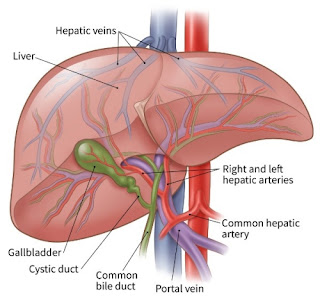LIVER CIRRHOSIS
Liver is the main functioning organ of the Human body, situated in the right upper quadrant of the body.
The liver also has an important role in regulating the supply of glucose and lipids.
LIVER FUNCTION
- Removes potentially toxic byproducts of certain medications.
- Prevents shortages of nutrients by storing vitamins, minerals and sugar.
- Metabolism or break down, nutrients from food to produce energy, when needed.
- Produces most proteins needed by the body.
- Helps your body fight infection by removing bacteria from blood.
- Produces most of the substances that regulate blood clotting.
- Produces bile, a compound needed to digest fat and to absorb vitamin A,D,E and K.
LIVER CIRRHOSIS
Cirrhosis is a complication of liver disease that involves loss of liver cells and irreversible scarring of the liver.
CAUSES
Alcohol and viral hepatitis B and C are common causes, many other more causes.
SYMPTOMS OF LIVER CIRRHOSIS
- Cirrhosis can cause
- weakness,
- loss of appetite,
- easy bruising,
- yellowing of skin (jaundice),
- itching and
- fatigue.
DIAGNOSIS
Diagnosis by history physical examination and blood tests, and can be confirmed by liver biopsy.
COMPLICATIONS
- Swelling of the abdomen (Ascites) and hip, thigh, leg, ankle and foot.
- Spontaneous bacterial peritonitis.
- Bleeding from varices.
- Hepatic encephalopathy.
- Hepato-renal syndrome.
- Hepato-pulmonary syndrome.
- Hypersplenism
- Liver cancer.
STAGES OF LIVER CIRRHOSIS
- STAGES 1 CIRRHOSIS involves some scarring of the liver, but few symptoms.This stage is considered compensated cirrhosis,where there are no complications.
- STAGE 2 CIRRHOSIS includes worsening portal hypertension and the development of varices.
- STAGE 3 CIRRHOSIS involves the development of Swelling in the abdomen and advanced liver scarring.This stage marks decompensated cirrhosis, with serious complications and possible liver failure.
- STAGE 4 CIRRHOSIS can be life threatening and people here develop end-stage liver disease (ESLD),which is fatal without a transplant.
TREATMENTS
- Treatment of Cirrhosis is designed to prevent further damage to the liver, treat complications of cirrhosis, and prevent or detect liver cancer early.
- Transplantation of liver is an important option for treating patients with advanced cirrhosis.
- There is no cure for cirrhosis of the liver, and for some patients prognosis is poor. The life expectancy for advanced cirrhosis is 6 months to 2 years depending on complications of cirrhosis.
- The life expectancy of cirrhotic patient is almost 12 years with no major complication.

Very nice information sir
ReplyDelete